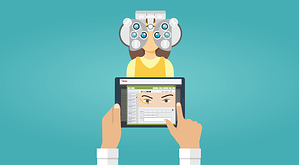How To Increase Patient Face Time In Your Optometric Practice
Communicating face-to-face with your patients is essential for strengthening relationships, improving efficiency, and getting your message across accurately. Unfortunately, in the digital age, it’s becoming more difficult to engage in face-to-face communication. This is also true in an optometric practice where the exam room is equipped with numerous digital devices that take an OD's focus off of the patient. However, using a smart EHR, you can keep your eyes on what matters most in your practice.
This post provides a few tips on how you can regain your focus on the patient without decreasing the level of care that you administer to the patient.
2 Tips For Increasing Patient Face Time In Your Optometric Practice
Get Off The Computer
Most ODs find that when they go to enter data into their computer, they have to turn their back on their patient. While the disruption is brief, the effects are felt by each part. When you turn your back on an individual, you impede communication by making it harder for you to be heard and harder for you to listen to the patient.
To combat this and maintain a face-to-face conversation with the patient, try using a tablet-friendly EHR and practice management solution. Using your practice management and EHR software on an iPad will enable you to maintain direct communication with the patient and to move freely throughout your practice to access your patient records while on the move, so you always have the most up-to-date documentation.
Use SmartTouch EHR By UPRISE℠
Many factors go into providing efficient, quality care to your patients. But with most EHR solutions, these factors are disrupted by a click-heavy workflow that takes your attention away from the patient to navigate the complex system to document the exam accurately.
With SmartTouch EHR BY UPRISE℠, you can quickly document a patient exam in a few clicks resulting in an OD being able to document a comprehensive exam in as little as 60-seconds. Even a complex exam takes less than 90-seconds to record.
For more tips on improving your patient interaction and office workflow, subscribe to the blog.

